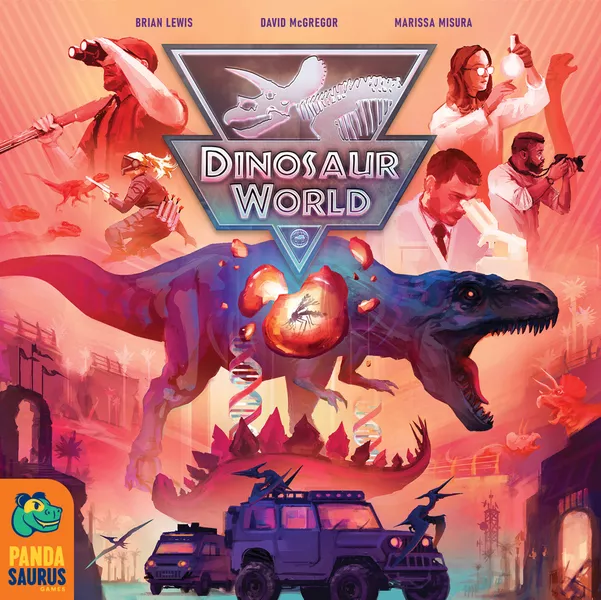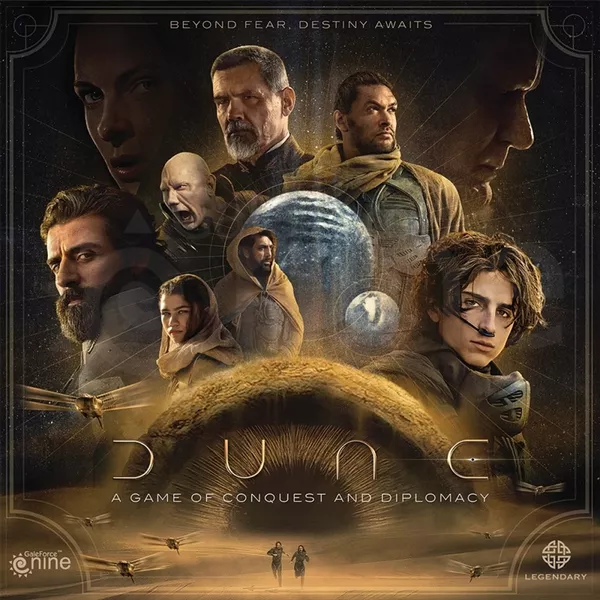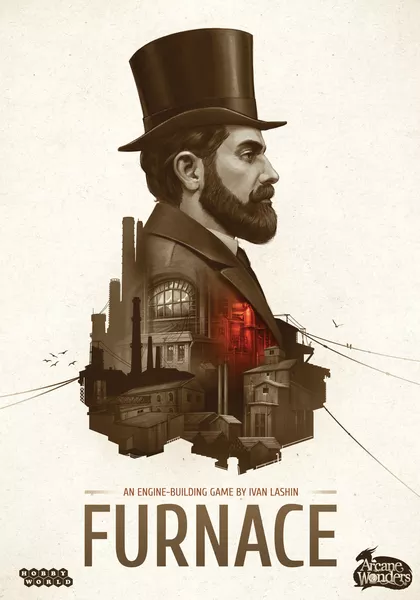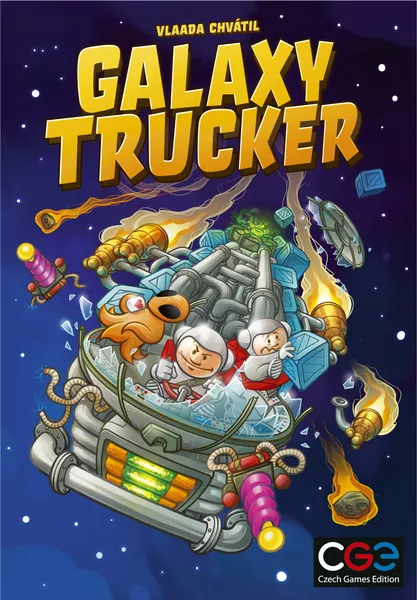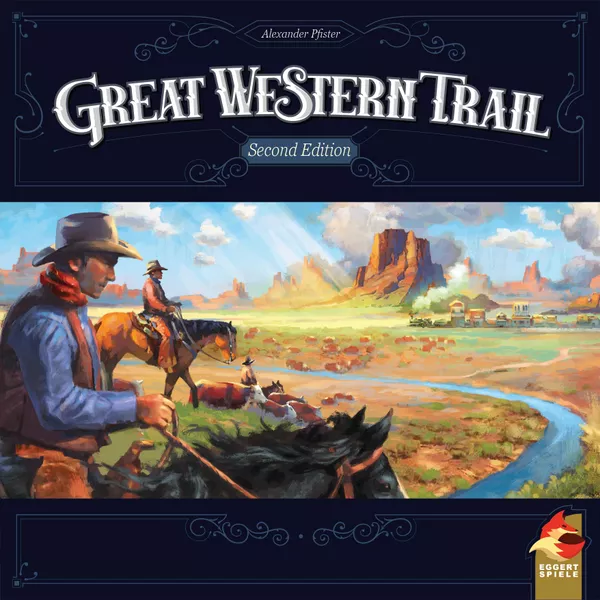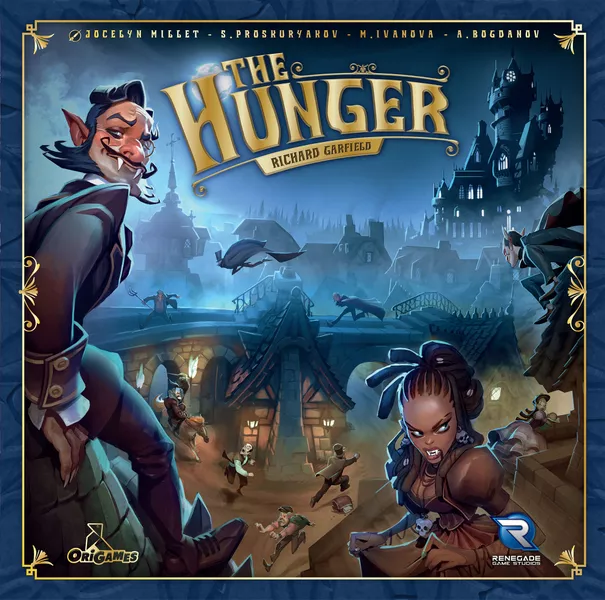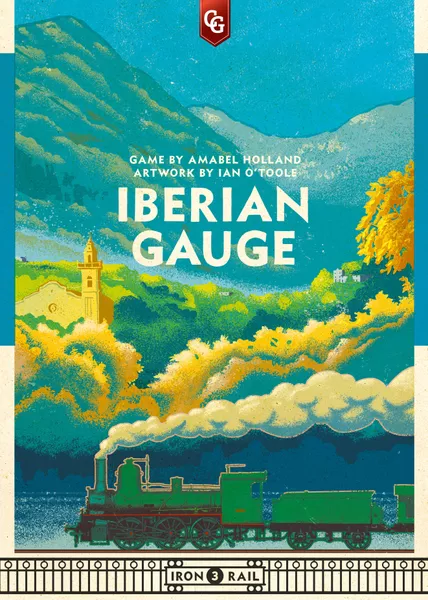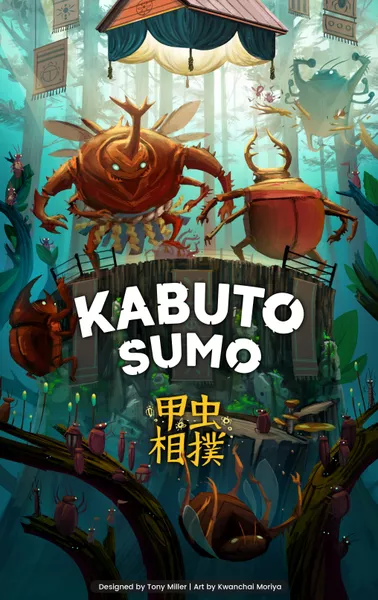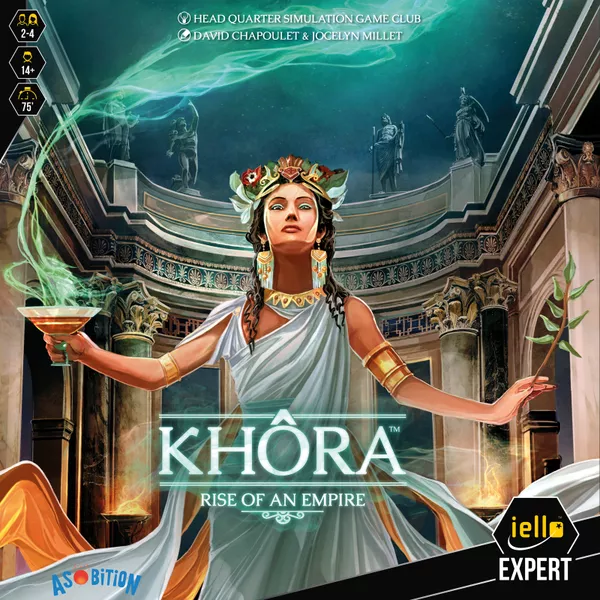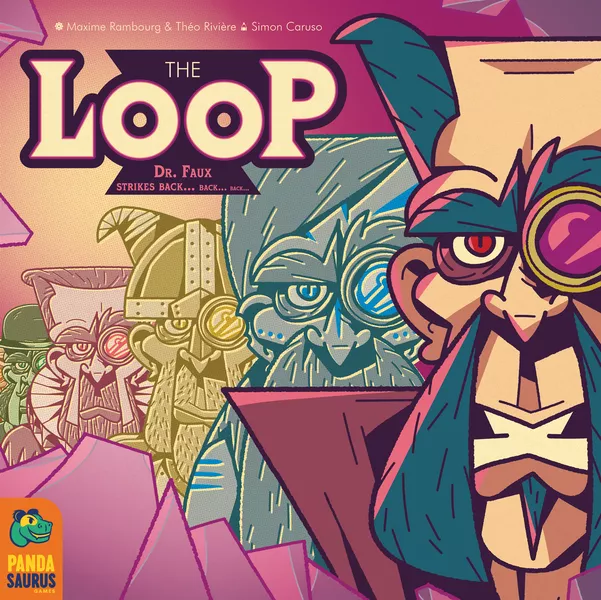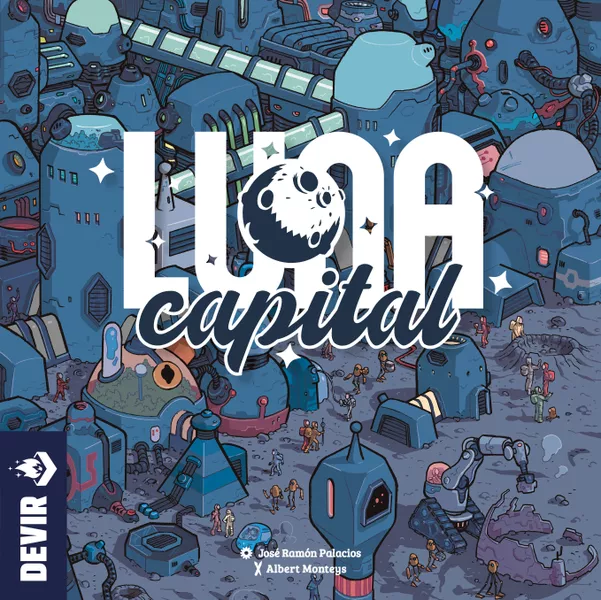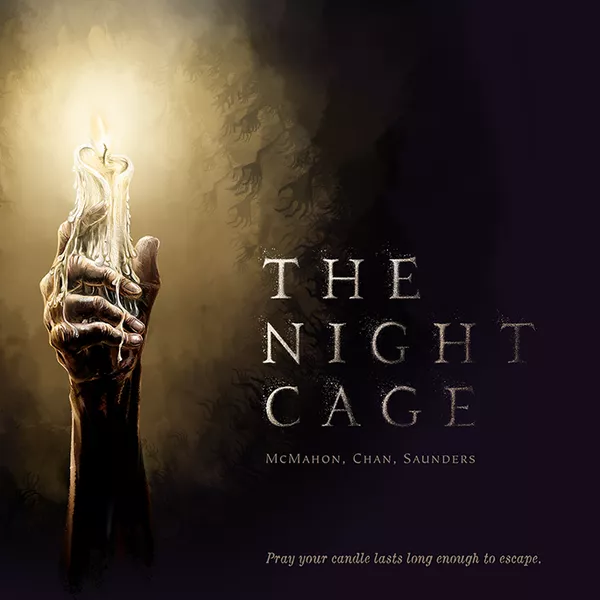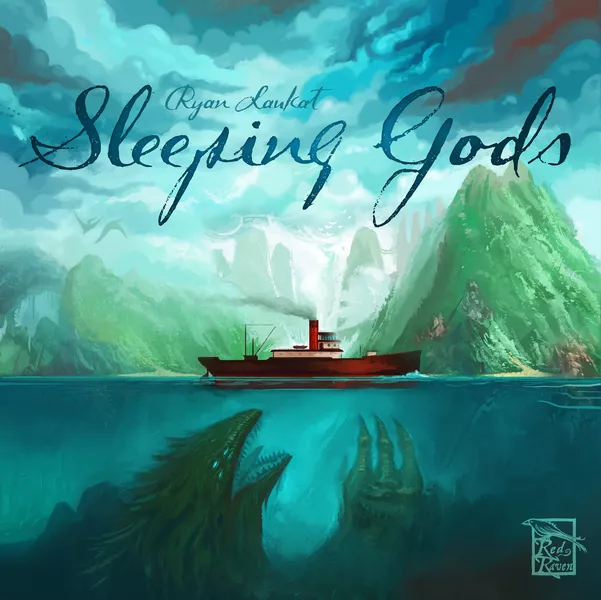For those who have never attended a mammoth sized board game convention such as Gen Con, one important factor to consider when deciding whether or not you want to attend for that first time experience is precisely that: it is an expo. For all of the cardboard cavorting with panels, events, meetups, and general socializing amongst like-minded folk – all of which are exciting and fun! – at its core Gen Con revolves around selling you brand new shiny things.
In a typical year thousands of new games get release, with several hundred often making their inaugural appearances at places like Gen Con or Essen Spiel in Germany. In a typical year, there is a bevy of activity both in the lead up to the convention and throughout its entire duration by publishers looking to get their game in front of your eyeballs somehow. Maybe it’s through social media postings, early reviews, targeted ads, newsletters, rented beach planes, or anything else they feel would conceivably work. Publishers are acutely aware you only have so much time in your day and money in your wallet, and they want you focusing on their stuff as much as they can.
Lest we forget sometimes, publishers are still businesses and businesses like money. This is exponentially compounded by the increased competition due to all those other new games, meaning that the challenge has been getting more difficult with each successive year. As keystone moments in hobby, expos like Gen Con are an opportunity for companies large and small to grab your attention to that end however briefly, even if you aren’t even at them directly. Crowdfunding sites such as Kickstarter have fundamentally shifted how many designers and consumers think about and interact with the industry, but through it all, the desire from most publishing a game is still to use the traditional retail distribution model in the end. But those efforts aren’t free. If you want to see more of your favorite artists and designers making games, they need to either get their games signed or go through the gauntlet that is running a crowdfunding campaign. To get those games developed, manufactured, and shipped requires money. And to get money, they need to sell you games. It’s all very cyclical.
Though technological innovation, more direct-level marketing from publishers, and a pandemic-reinforced demonstration that conventions are not an absolute requirement to raise awareness of one’s game, there are often still distinct advantages of being part of a convention versus, you know, not. When you put that many people trying to ply their latest wares in the same room, the result is nothing if not electric. The level of new product on the Gen Con expo floor and the collective energy of demoers and patrons alike is enough to make even the most introverted amongst us excited to be there for a time. There is nothing else like it on this side of the Atlantic. You want to partake in as much of the exuberance as possible. Step into our booth! Demo our game! Let me show you what’s for sale! When you multiply that enthusiasm across the entire hall, it’s hard not to get swept up in it all. Which is precisely what publishers want. After all, impulsiveness plus captivated audience equals sales.
At least, that’s now Gen Con normally is.
Gen Con 2021 was markedly different for two reasons. The first is the distinctly different look and feel of the expo hall, as we mentioned in Part 1. With dozens of notable and normally ever-present publishers sitting this year out, the hall was notably more spacious than normal, but almost more vacant. In turn, fewer publishers – including several of the hobby’s largest – meant fewer new titles were on display than has been true in recent years.
The second reason, and arguably more impacting, was the sheer number of titles that did not arrive in time due to the ongoing global shipping fiasco. Even with Gen Con 2021 occurring nearly 6 weeks later in the year than is traditional, that extra time was still not enough to make up for the staggering bottleneck the hobby is experiencing. There have been numerous reportings and pieces on the issue over the last few months tackling topics from the consolidation of global freight companies to the inherent inelasticity of vaunted modern “Just in Time” inventory and production practices, but the simple version is this: the pandemic has significantly upended the normal flow of supply and demand out of Asia.
As COVID-19 spread across China, manufacturing and shipping of practically everything slowed or stalled entirely as the country dealt with quarantines and other disease mitigation efforts. As the pandemic spread, more and more people turned to ordering practically everything online, creating a massive spike across an array of industry products. Even once factories started coming back online, we’d all created such a backlog of demand that global logistics systems weren’t able to keep up. Many domestic shipping ports ended up with significant offloading and processing backlogs, and the resulting increased need for shipping containers to move product has led to a sharp and lasting surge in cargo freight prices.
Many corporations and industries have been willing or able to absorb those price surges in order to keep commerce moving. Yet because the board game industry operates on fairly thin margins with its products and with freight prices reaching in some cases as much as 10 times higher than a year ago, printing decisions have become much more difficult. Some publishers have begrudgingly taken those costs on the chin (for now), while others (typically the small and medium sized ones) have opted instead to wait for more favorable prices – putting them further behind in the queue and therefore delaying shipments. Some publishers have even opted to delay reprints of popular games knowing they’d sell because at the moment they wouldn’t make any money on them…unless they raise prices. Which is likely just a matter of time – and in some ways long overdue.
Delay therefore became a common refrain at this year’s con. What would have been normal Gen Con releases were stuck in customs. Or were stuck waiting to be offloaded at port. Or were stuck in China trying to get on a boat. Or were sitting in a warehouse in China waiting for prices to normalize a bit. And so on. On the one hand, the sheer number of affected titles should make for an exciting fourth quarter this year. On the other, this bit into the typically imposing number of Gen Con debuts.
That being said, it was still Gen Con. It had plenty of games available worth talking about, and publishers were on hand to drum up as much fanfare for their games as possible. Sometimes this can happen organically via word of mouth and positive experiences while at the con, generating surprise hits (we’ll be coming back to those in Part 4). Often, however, many publishers start the marketing campaigns for their games weeks or even months in advance via social media, newsletters, influence peddling, showing off demos at other conventions, and so on. Doing this drives up a game’s hype.
And boy howdy does Gen Con thrive on hype. Even in a pandemic.
Sometimes these games live up to the level of fervor that has been generated for it, and sometimes they don’t. In Part 3 of our Gen Con 2021 Recap: Surreal Edition, today we take a brief look at 15 of some of the most hyped new games leading up to Gen Con and how their reception fared by the end of the convention.
Well, those that actually made it to the convention anyway.
Also See:
- Part 1 – A Foreword: Conventioning During COVID
- Part 2 – Active Crowdfunding Projects
- Part 3 – The New Hotness
- Part 4 – The Surprise Hits
- Part 5 – News & Announcements
- Part 6 – What Comes Next
The New Hotness
Camel Up: Off Season
Publisher: Pretzel Games / Plan B Games | Players: 3-5 | Play Time: 45 Minutes
Although facing delays in its own right, Camel Up: Off Season was nevertheless physically there and for sale – one off Plan B’s two new titles. The quirky part to Off Season as a representative of this list, though, is that its hype efforts may have gotten a smidge ahead of themselves.
Unlike other titles that have either been building a steady steam of attention over the course of 2021, or at least in the weeks heading into Gen Con, most of Off Season’s focus happened during the spring, shortly after its announcement. Then it was abruptly paused. The intrigue around that fact inadvertently kept curiosity about the game going. Originally slated for a general summer 2021 release, Off Season ended up getting delayed so much that Gen Con served as its debut, with a wider release expected ideally sometime in late October.
Between the name, cover art, and the fact that it super stealthily involves camels, Camel Up: Off Season was billed as a standalone sequel to the fantastic and award-winning racing game Camel Up. It banks hard on that association, but doing so brings with it a double-edged sword. For despite surface similarities and a focus on making money, Off Season’s gameplay has little to do with its predecessor. In this title, players are merchants needing to move different kinds of goods to market. By stacking their camel caravans with similar items, players push their luck at buying stacks of goods from different locations and attempt to build sets of items for larger payouts. If the camel gets overloaded with too many of that item, however, they collapse, and the cards are lost.
As a game released from stasis, Camel Up: Off Season started the convention off with an ample amount of attention and sold decently overall, boding well for a general release. But I highly doubt it will rise anywhere close to the same level of Camel Up magic as its progenitor.
Cascadia
Publisher: Flatout Games / Alderac Entertainment Group | Players: 1-4 | Play Time: 30-45 Minutes
By contrast comes a title very much on the traditional hype train. Cascadia has been on an attention tear pretty much since it was unveiled. From its highly successful Kickstarter campaign to its midsummer delivery and from widescale appearance on many anticipated 2021 game lists to its formal unveiling at Gen Con by way of AEG, Cascadia has been one of those titles that’s almost hard to have not heard about at this point.
Which is to say, precisely the kind of part and parcel Gen Con release you’d expect in a normal year.
Flatout Games has been quickly making a name for themselves over the last few years as both makers and enthusiasts of lightweight but thinky titles with pleasant, placid themes and serving dual roles as both as designers and publishers. Coming off their massive success in the latter case with 2020’s Calico comes Cascadia, a straightforward tile-laying puzzle game set in the picturesque Pacific Northwest and once again illustrated by estimable PNW resident herself, Beth Sobel. (Which isn’t to be confused with Flatout’s own 2021 design in Public Market by Talon Strikes Studio, which through massive coincidence also released recently, is also drawn by Beth Sobel, and is also set in the same region.)
Gameplay in Cascadia is brisk and concise, though not without a challenge. In it, players take turns drafting randomized pairs of terrain tiles and wildlife tokens, with the desire for each to be placed in certain ways to maximize points for endgame scoring. The catch is that terrain scoring and wildlife scoring can often be at odds, setting you up to make occasionally tough choices.
Unlike many hot Gen Con titles which tend to sell out quickly, AEG had an ample supply on hand ahead of its retail release last week. Which was definitely advantageous given how much activity both this title and the booth were getting the entire time.
Dinosaur World
Publisher: Pandasaurus Games | Players: 2-4 | Play Time: 60-120 Minutes
If you’ve paid attention to Pandasaurus Games at all lately, two things are particularly clear. The first is that they’re having a banner time with a slate of appealing releases, from the enchanting Brew to the pending release of a Machi Koro sequel, to the US localization of two 2020 European releases in Wild Space and The LOOP. The second is that they have definitely doubled down on the dinosaur part of their brand the last 12 months.
Both elements were impossible to miss at the Pandasaurus booth this year, partially due to ambiance, but mostly because they had plenty of games to sell, offering up 5 titles that were either brand new to the convention or came out earlier this summer. (MK2 was to be its sixth, but sadly didn’t arrive in time.)
The centerpiece around all this was undoubtedly Dinosaur World. Coming off a $1,000,000 Kickstarter campaign in tandem with a Dinosaur Island roll and write – Rawr ‘n Write – Dinosaur World commanded a fair bit of attention both before and during the convention. Touted as either the spiritual successor to the wildly successful Dinosaur Island or as a retooled and rebooted version of it varies depending on who you ask, but plenty of people (myself included) were curious to find out.
In both games the core concept remains the same: draft dino DNA to create new dinosaurs, spend workers to build up your park, and show it off to visitors without too many getting eaten. The exact mechanics on how these things are accomplished in Dinosaur World vary from its predecessor, for instance, with more of an emphasis on park layout and a visitor Jeep tour, and I have a strong hunch there will be ample debate over which title people will prefer in the end.
But for once that seems a debate where in the end everybody still wins.
Well, except those who get eaten.
Dune: A Game of Conquest and Diplomacy
Publisher: Gale Force Nine | Players: 2-4 | Play Time: 30-60 Minutes
Once upon a time having a Dune board game was a point of geeky pride, as the famously reluctant Herbert estate was loathe to step into the world of merchandizing. Which is why for decades the only official game was the vaunted 1979 Avalon Hill title. Barring two brief reprints in the mid 80s and a French-only one in the early 90s, it took nearly 40 years for that to change. Now here we are. It started with a new edition of Dune in late 2019, followed by the IP’s first brand new game in 2020’s Dune: Imperium. This year will see the release of at least 3 new titles leading up to the new movie. Gale Force Nine is publishing two of them. One, the short social deduction game Dune: Betrayal quietly dropped at Gen Con with almost zero lead-in. By contrast, Dune: A Game of Conquest and Diplomacy came with only a few weeks’ notice but quickly had people buzzing trying to learn more about this latest trip to Arrakis.
Essentially, Dune: Conquest is advertised as a streamlined and scaled-down version of its parent. The intent is to trim the deeply interwoven and complex gameplay of Dune’s 2-3 hour play time into a faster, easier to digest 30-60 minutes while also making it palatable at 2 players (something the original is technically capable of doing but no one actually recommends.)
There was unsurprisingly a lot of interest around the game at the con, and based on early responses there they did succeed at making an interesting Dune-themed 2-player area majority game. Yet Dune Jr. this is not. With a scant few rounds and a cap at 4 players, the “diplomacy” part of its title appears to be conspicuously missing, and I’m betting that’s going to lead to a fair amount of misaligned expectations when it releases within the next month or so.
Furnace
Publisher: Hobby World / Arcane Wonders | Players: 2-4 | Play Time: 30-60 Minutes
Although Russian-based publisher and distributor Hobby World has been a staple of the board game industry in some form for close to two decades, it hasn’t been widely known to most in North America. As is traditionally the case with international companies, Hobby World has relied on co-publications with domestic publishers, such with Cryptozoic for Spyfall or Mayday Games for Viceroy. While going forward they have designs on more direct involvement with the North American market, Furnace nevertheless marks their latest collaboration – this time with Arcane Wonders.
Though not officially available in the US until its concurrent retail release with Gen Con, Furnace had been feeding a consistent slow burn of interest since what would have been an Essen Spiel 2020 release. As it approached its originally intended early summer street date, that interest spiked. All of which explains why this lightweight industrial-themed engine builder was easily one of the big hits of the convention. Arcane Wonders had a fair amount of stock for several of its new and fairly-new releases, but Furnace was far and away their biggest attention-getter.
In this hourish tableau-building card game, players are all 19 and early 20th century industrialists looking to ramp up their capitalist enterprises. Over four rounds, each person competes in an auction to bid on new companies to add to their corporation, trying to obtain those which will provide the best combos and synergy with their existing assets. Then players run those production chains to generate resources and ultimately the most important resource – cold hard cash.
Like similar games in its style and weight class, Furnace is swift, approachable, and scratches that engine building itch when time is short. It sold well at the convention and I think should do well in the short term. Whether it holds up in the long run against a competitive field of similar titles remains to be seen.
Galaxy Trucker (Third Edition)
Publisher: Czech Games Edition | Players: 2-4 | Play Time: 20-40 Minutes
I freely admit that while I fully understand the widescale appeal and wholesale originality of Vlaada Chvátil’s 2007 megahit Galaxy Trucker, it was never a game that appealed to me personally. The mix of frantically trying to build a ship in real-time against your opponents in a way that would simultaneously fit shipbuilding requirements, give a leg up on the competition, and try to plan against what random hazards lay in store for you during the racing part of the round is certainly enticing on paper, but real-time gameplay is generally not my jam. But for the thousands of Galaxy Trucker fans, the experience of fending off pirates, hoarding cargo, and trying (often in vain) to hold your ship together across the entire course is as frenetic as it is vitalizing.
Over the years Galaxy Trucker has amassed an ardent following, featured numerous expansions, and developed a well-praised digital version. In retrospect I shouldn’t have been surprised that such a beloved franchise would have generated heavy anticipation for the rebooted 2021 version making its first widescale appearance at Gen Con coinciding with its retail release.
And yet.
As its main draw for the con, Galaxy Trucker publisher Czech Games Edition had a copious supply on hand. The thrust of the game remains unchanged, but this new edition brings with it all new artwork, has incorporated some tiles from previous expansions, and above all, shortened the experience from three flights to one, cutting an occasionally lengthy gameplay experience into a speedy 30 minutes. (You can still play with the original rules, however.) The final look is as vibrant and enticing as ever, particularly to new gamers or those who only ever had the original base game – as evidenced by how fast people were adding copies of it to their own cargo holds.
Great Western Trail (Second Edition)
Publisher: eggertspiele / Plan B Games | Players: 1-4 | Play Time: 75-150 Minutes
Of all the titles to garner buzz ahead of Gen Con 2021, perhaps the least surprising one to us was the unveiling of eggertspiele’s new edition of Great Western Trail. Almost immediately since its original release in 2016 GWT became a heavy Euro favorite, has racked up all manner of critical praise and accolades, and further elevated the pedigree of designer Alexander Pfister.
Much like two others on this list, the new Great Western Trail is not technically a “new” hotness title insomuch as a polished new edition with slight modifications to the original game. But that certainly didn’t stop people from treating it as such.
Great Western Trail centers around leading a 19th century Midwestern cattle drive. The crux of each trek forces you to not only care for the health and value of your herds but also invest in various buildings and improvements along the way to maximize your point scoring potential. Executing such plans naturally are easier said than done, and much of the game’s strategy lies in deciding when and where to make such improvements. The new version, announced as part of a 3-year game trilogy, boasts brand new artwork, a solo mode, production quality upgrades, and addition of new components to add even more variety and replayability.
Plan B games originally wanted to have a larger allotment of copies available for sale ahead of its (hopefully) early November release, fully knowing it was going to be highly sought after – and they weren’t wrong. Unfortunately only a portion of the shipment made it successfully and that still didn’t arrive until Friday afternoon. The contents of which were effectively gone shortly after opening Saturday morning.
Even in an off-year, Gen Con is still Gen Con.
The Hunger
Publisher: Renegade Game Studios | Players: 2-6 | Play Time: 60 Minutes
In terms of sheer number of releases at this year’s Gen Con, perhaps no one came loaded to bear more than Renegade. In addition to a decent cross-section of their ever-growing board game and tabletop RPG catalog, Renegade had plenty of newness to show off with no fewer than 10 new titles and expansions making their first widespread appearances, including the new edition of the underrated Gravwell, more Vampire Rivals card game expansions, and three deckbuilders. Among all those exciting options, one that led the pack curiosity-wise going in was The Hunger.
It’s sort of like Richard Garfield still has name recognition around the hobby or something.
At its most basic, The Hunger is a deckbuilder buttressed with push-your-luck elements. In it, each player is a vampire venturing down at night from the confines of a mountainside castle in search of an evening snack…or twelve. The single resource in the game is Hunt points, which serve double duty as movement points and the currency. Obtaining human cards are worth desirable VP but offer no Hunt points, eventually bloating your highly limited hand and can only be removed at locations further and further away from the castle. Failure to return to the castle after a fixed number of rounds results in imminent death. Otherwise, it’s whoever had the most, erm, successful evening.
Being a fellow Renegade title, The Hunger will draw immediate comparisons to Clank!, and though there are some notable gameplay similarities, The Hunger differs enough in style and tactics that it should be able to stand on its own, but time will tell. With excellent artwork and deliciously macabre theme, people will be able to sink their fangs into it upon its release later this month.
Iberian Gauge
Publisher: Capstone Games | Players: 3-5 | Play Time: 60-90 Minutes
Cube rail games have been part of the hobby for nearly 15 years, and though they’ve long been enjoyed, they’ve never quite escaped niche status. Part of that is because of a longstanding mistaken association with their much longer and more intimidating cousins, the 18xx game, as both revolve around laying train track and owning stock. Part of that is also because, by and large, cube rails have long favored function over form – i.e. they don’t always look that enticing on a table.
Thanks to Capstone’s new Iron Rail series, that is changing…slightly.
With upgraded production quality and artwork courtesy of the ever-commendable Ian O’Toole, Capstone has made an effort in recent years to bring cube rails to a whole new crop of gamers. 2017’s Iberian Gauge is the third such title to get this treatment.
As with most cube rail games, Iberian Gauge focuses on obtaining stock in various railroad companies and laying track on the board to further that company’s corporate reach, all with the end goal of having the most lucrative portfolio. Iberian deviates from the typical path by giving each stockholder a say every round on how that railroad evolves, allowing for you to either coordinate or hamstring a company – depending on your ambitions – as well as the ability to lease track from one another to reduce costs. The end result is a fairly dynamic and engaging title for the cube rail series.
As a cube rail adherent myself over the last few years, I was eager to see the finished product myself heading into the con, and despite largely aesthetic changes, I was far from alone. The Iron Rails approach certainly appears to be working. Originally slated for a June release, Iberian Gauge officially hit distribution around the time of Gen Con, with preorders arriving in August.
Kabuto Sumo
Publisher: BoardGameTables.com | Players: 2-4 | Play Time: 15 Minutes
A particularly enduring quirk about the board game hobby is that board game publishers don’t all remotely look or operate the same. Publishers can either be a large team or be literally a single person trying to bring their passion project to life. A company may solely focus on games or could branch out into accessories and general geekery. And, occasionally, a company with no original intent to be a game publisher sort of backs into it. Enter Boardgametables.com.
As the name makes rather evident, BGT’s principal focus was on making quality and affordable gaming tables. While that’s still very much at the center of their brand, over the last few years they’ve also rapidly expanded into publishing games to showcase alongside them. One of these 2021 releases is the short and sweet Kabuto Sumo.
Having reached Kickstarter backers in late August, Gen Con was the first real instance of seeing this insect fighting game in the wild. Using a blend of dexterity and light strategy, as well as borrowing inspiration from classic coin-pushing arcade games, players in Kabuto Sumo are beetles who are pitted against one another on a raised platform with the simple goal of pushing the other bug off the ledge.
Due to its colorful wooden components, original theme, quick playthroughs, and an enjoyable table presence, Kabuto Sumo is precisely the kind of game that attracts audiences at a con. Demos of the game were quick and constant, providing ample opportunity to check it out.
All that alongside a modest price point ensured Kabuto Sumo had all the hallmarks of a classic convention game pickup that could be forgotten a few months later. Yet for those wishing to add some creative variety to their filler game lineup, I suspect this one may have some legs to it.
Khôra: Rise of an Empire
Publisher: IELLO Games | Players: 2-4 | Play Time: 75 Minutes
Any public-facing company longs for a cohesive brand identity. The easier it is to convey what your company makes and stands for helps customers remember you and associate with products they enjoy. Not only does this help separate you from your competition, but it also sets the basis for repeat business and brand loyalty. This is true whether your product is a food chain, clothing store, or board game company.
In the case of French publisher IELLO, they have spent over a decade growing and fostering an association between themselves and lightweight family-oriented games, including their most iconic title in King of Tokyo.
As successful as this focus on children’s and family games has been for IELLO, 2021 marks their foray into something slightly more complex with the launch of a new “expert” line of games. The inaugural title to this end is the light to medium weight dice-driven civ builder Khora. A reboot of a Japanese title, Khora is a 75 minute venture into building up an ancient Greek city-state. Over a fixed number of rounds, players roll some dice and then assign them to different actions. Doing so allows you to gain resources, raise a military, move up on various development tracks, and more. In typical fashion, advancing in different areas triggers new abilities and bonuses to further your agenda, all with the end goal of building the most glorious civilization.
In many ways Khora benefitted nearly as much from pre-con buzz about the game itself as the idea of a new somewhat heavier IELLO line, which was underscored by it commanding most of the attention at the booth.
That said, while the concept is certainly interesting I’m a little skeptical whether Khora itself has significant lasting power. Given that it debuted simultaneously at Gen Con and at retail, I suppose we’ll find out soon enough.
The LOOP
Publisher: Pandasaurus Games | Players: 1-4 | Play Time: 45-75 Minutes
Looping back to Pandasaurus…
(sorry not sorry)
As much as their booth was saturated by games involving giant, colorful thunder lizards, one of the real surprises to me was that one of their other hottest selling titles ended up being The LOOP, a 2020 release by French publishers Catch Up Games that Pandasaurus brought over to US markets. While I’ve had it on my personal list since first learning that it was coming to our shores, I admittedly was a little surprised just how many others were eager to check this title out – especially given that in the leadup to Gen Con it outwardly seemed like it was being treated as one of the company’s also-rans alongside Dinosaur World and Machi Koro 2.
Indeed while it may not have been at the top of New Hotness lists, there was certainly more low-level buzz about it heading in to Gen Con than I realized, and by the end Pandasaurus had sold out of it.
At its most basic, The LOOP is an eccentric-themed cooperative game with deckbuilding elements centered around time travel. In it, an evil mad scientist has created a time machine and through paradoxes created numerous copies of himself, all with the intent of taking over the universe. As you’d expect, however, the space-time continuum is not a fan of this, and powerful rifts are opening threatening all of existence, the chaotic outcomes of which is represented in part via a centralized dice tower. Only through working together can you foil the scientist’s plans before all of existence spirals into chaotic nothingness.
Overall, if you like quirky humor, a novel time looping mechanism (hence the name), and a creative variation on Pandemic-style cooperative gameplay, The LOOP should have you covered when it officially drops either last year or several weeks from now. I know I’m in.
LUNA Capital
Publisher: Devir Games | Players: 1-4 | Play Time: 45 Minutes
Even in a good year, when one is atop their game and able to fully prepare for what lay in store for them at a major convention, it’s still insanely difficult to catch everything ahead of time. In my case, this is evidenced by LUNA Capital, another apparently low-level hotness title that I simply was not aware existed prior to the convention.
Others, on the other hand, certainly were.
It wasn’t the hottest of the new hotness for sure, particularly when competing against two other tile-placement games getting the lion’s share of attention, but there was more interest for this one that I initially realized.
Publisher Devir was showing numerous titles off at Gen Con this year, but LUNA Capital was undoubtedly one of the two most actively trafficked titles they had there, which gamers were able to see first-hand ahead of its planned December release.
In this enjoyably lightweight but thinky space-based tile drafting game, players are competing to make the most efficient and prosperous colony on the moon. When drafting, players take turns selecting from a market of construction modules. Modules range in utility and purpose, each providing different scoring opportunities based on how they’re arranged in your tableau. The hook to LUNA is that which construction cards you can take become increasingly constrained based on your previous selections, ensuring a need to mix tactical decision-making with light planning. A combination that clearly resonates with people – myself included.
Still, it’s hard to gauge exactly how LUNA Capital will fare when it finally releases to a wider audience. It certainly has merit as a lightweight tile puzzler and I can understand the attention it got before and during convention, it’s also hard to overlook how competitive a field that genre is. I suppose we’ll just have to orbit back around in a few months to find out.
The Night Cage
Publisher: Smirk & Laughter Games | Players: 1-5 | Play Time: 45-60 Minutes
One of the telltale signs a game has a fair amount of attention headed into Gen Con is that you’ll have no shortage of people with opinions on it. A prime example of this for 2021 is Smirk & Dagger’s horror-themed tile game The Night Cage.
Coming off a highly successful Kickstarter for the game, with backers receiving it throughout July and August, The Night Cage quickly positioned itself into one of the more hyped releases to be debuting at the convention. Whether it appealed to you going in or not, though, seemed to vary greatly.
The Night Cage is a cooperative title wherein each player finds themselves in a pitch-dark maze. Each player’s character can only see as many tiles in front of them as their dimly-lit candle will allow. Your goal, ultimately, is to collect the necessary keys needed to escape as a group. The twist, however, is that tile placement on the board only lasts as far as your lights shine, which leads to a continually changing labyrinth where doubling back is not possible. And to top it all off, you’re all being stalked by creatures who lurk in the shadows…
The crux to Night Cage’s potential longevity is whether you see this take on a tile game to be more novel or novelty. Based on the reception throughout the contention, it didn’t seem like those present either didn’t seem to make much of a distinction, or it didn’t matter – it was selling heartily either way.
As tile-placement games go, I think there’s lasting potential here given its creative use of fog-of-war visual elements with a foreboding theme, but whether it lights a fire to the tile genre or interest flickers out in the months ahead is hard to see clearly at the moment.
Sleeping Gods
Publisher: Red Raven Games | Players: 1-4 | Play Time: 60-999 Minutes
Normally I would call adding Sleeping Gods here a cheat, but the fact that it makes it all the same perfectly encapsulates the entire state of the board game hobby right now.
On the one hand, Ryan Laukat and Red Raven Games is an established brand and a known quantity. Serving as artist, designer, and publisher all in one, Laukat’s illustrations and gameplay styles have built up a fanbase over the years eager to see what he and his group will conjure up next. Sleeping Gods, arguably his most expansive project to date (or at least the most labor intensive), easily piqued people’s interest since he was first showing off prototypes of it more than two years ago – and that has only grown since. Hype for the game has been both palpable and steady.
Sleeping Gods, which is another casual but intriguing narrative-driven story game that offers generous hours of gameplay, also unintentionally positioned itself as a decent pandemic game. It’s an approachable, high quality family-friendly campaign game that lets you set your own pace on how fast you’d like to meander aboard the lost steamship Manticore as you try to find your way home.
Thing is, Sleeping Gods was a highly successful Kickstarter that delivered to backers in February and was slated for a May retail release, typically precluding it from being “convention new”.
Except 2021 hasn’t been remotely predictable for releases.
Despite a Q1 fulfillment, Gen Con is the first time it’s been at a major hobby event. More importantly, although having a May street date, Sleeping Gods has been practically impossible to obtain via retail. Not only did its initial print run immediately sell out, so has its second – and it hasn’t even arrived yet. All of which inexplicably made Gen Con the first time many were to have seen Sleeping Gods in person, hence the interest level. And that isn’t likely to abate anytime soon. Which easily explains why what limited stock they were able to cobble together for the convention sold out the first day.
That’s all for now! Check back for the next segment when we talk about games that didn’t have a ton of hype going in but made a splash all the same.
Photo Credits: The Simpsons by 20th Television.




